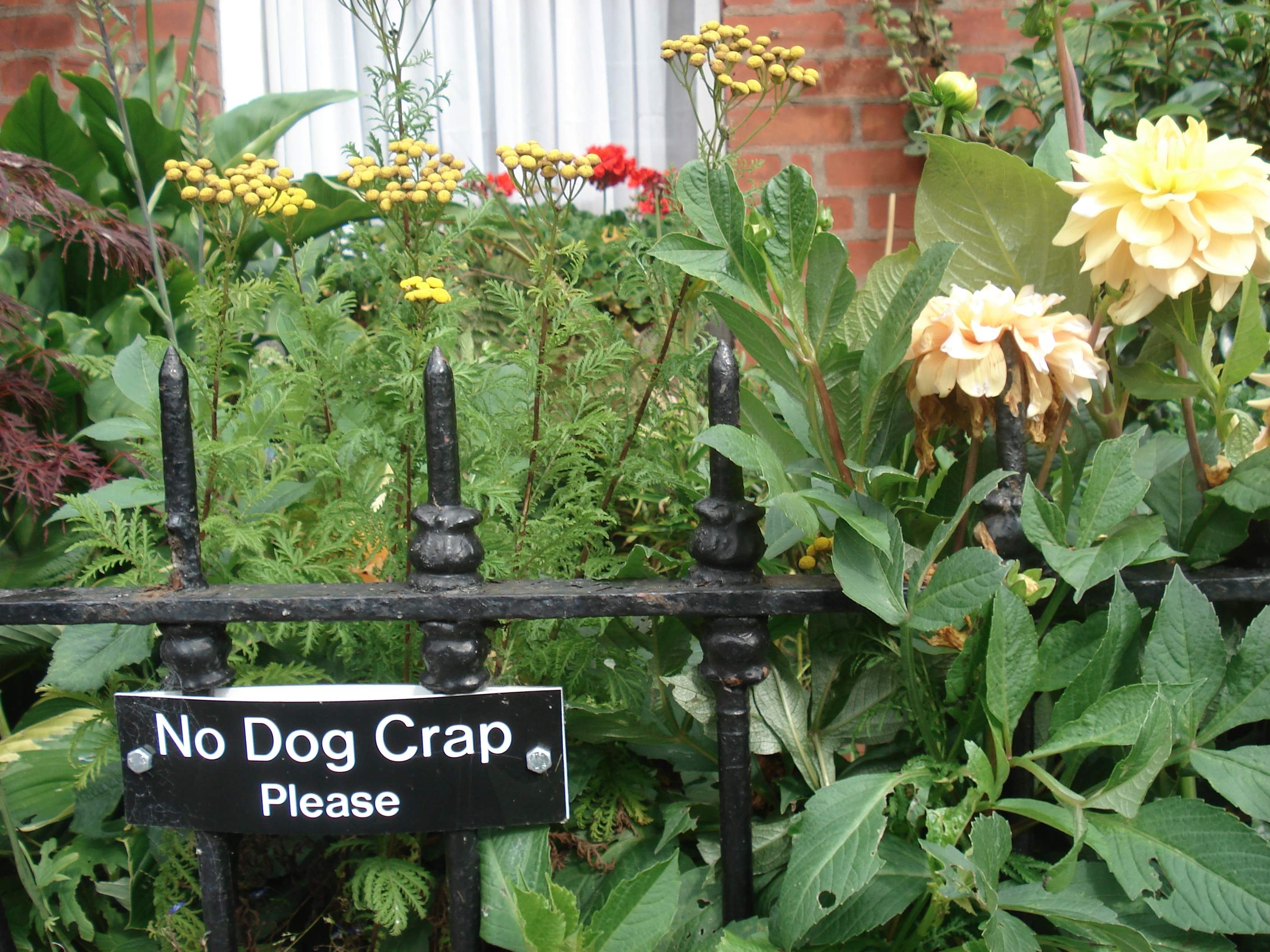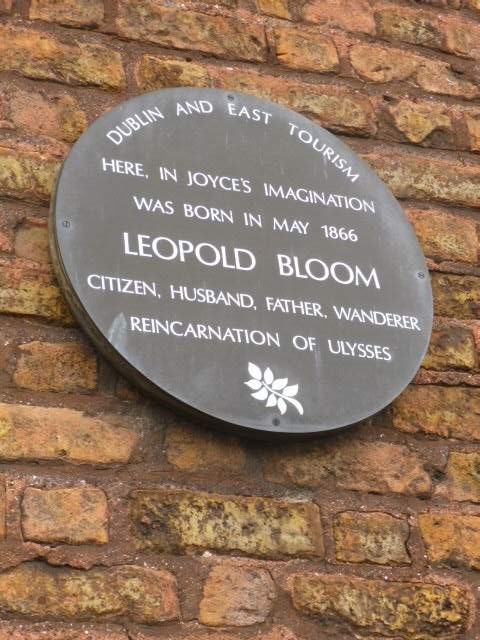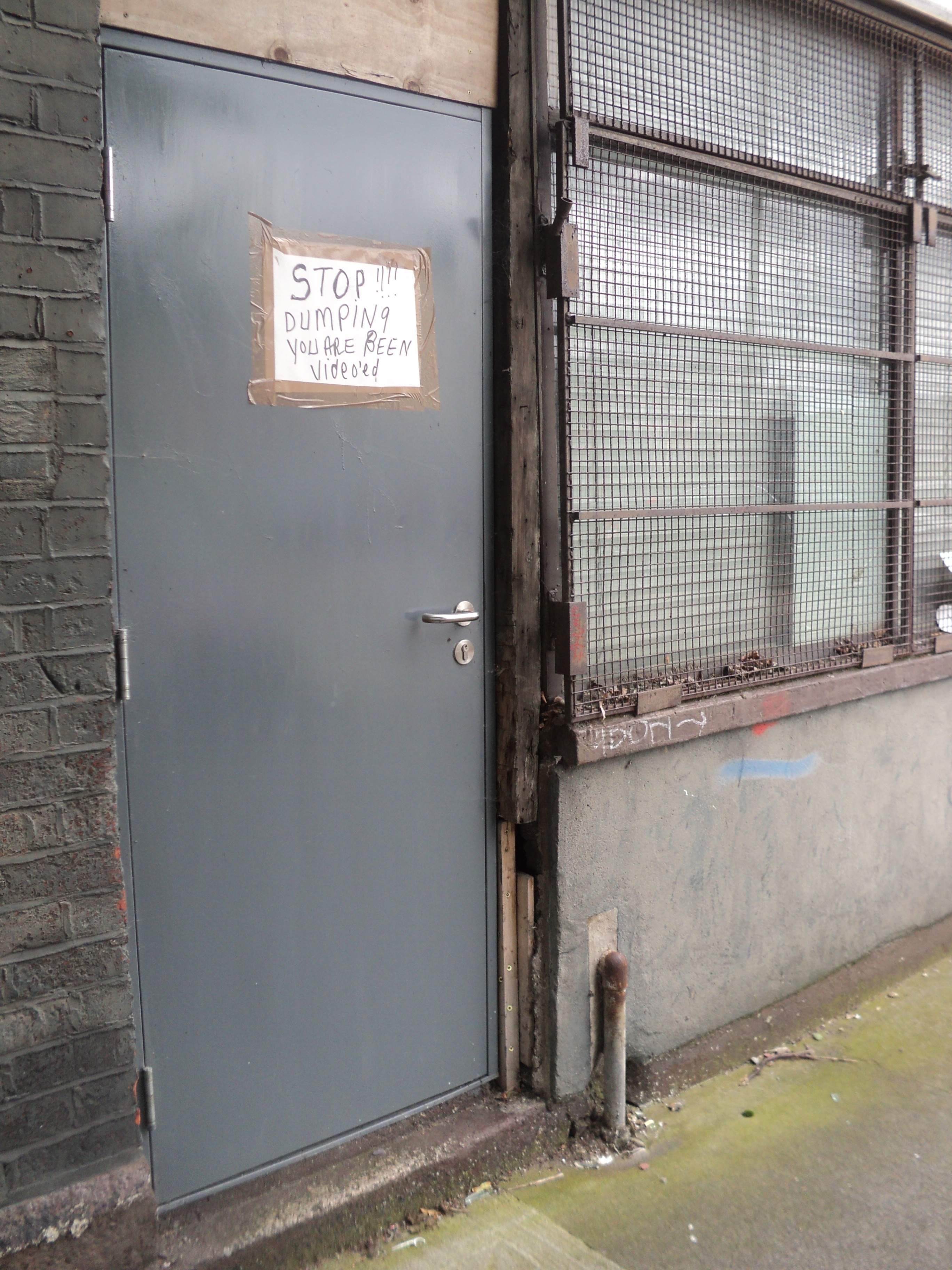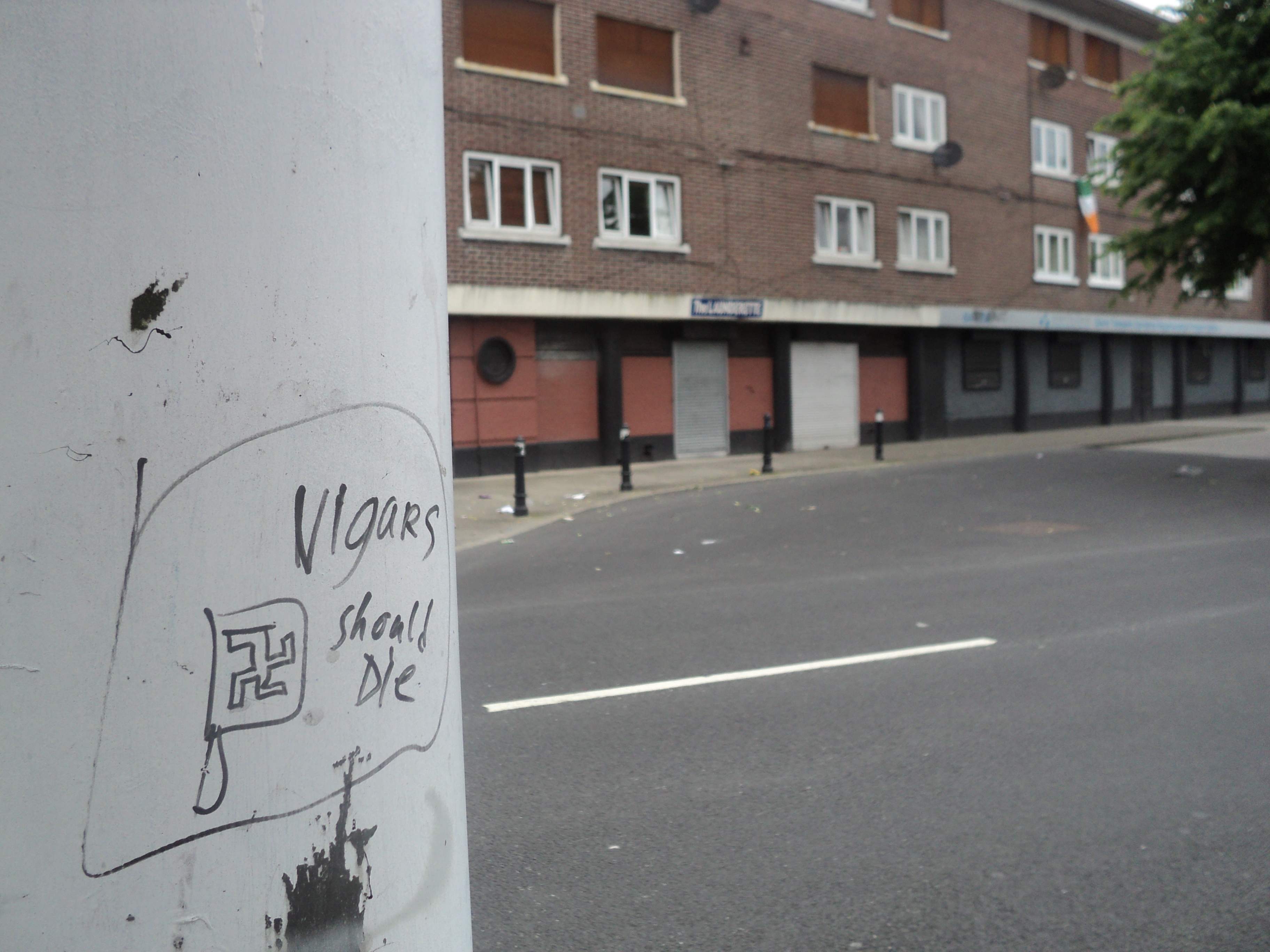No Please
Signs may not mean what they say, or rather they mention the thing they do not want, and so constitute their very thereness by reference to the absent thing. The spectrum we are surveying here ranges from the example of the 45-year-old who wears a vintage-looking ‘The Ramones’ t-shirt, but who when he/she was 17 had never heard of them, or if they had, were afraid of them, to the owner of the garden below who above all wants no dog crap, to the point where he/she can think of nothing else to say, indeed can think of nothing else.
Where on the spectrum can we put the next sign, which is a plaque to commemorate the birthplace of a fictional character? The claim-making urge is strong here, so strong indeed that the possibility that this is in fact the wrong house is no obstacle. Joyce said that Bloom was born in 52 Clanbrassil Street, but did not specify which end of the street, Upper or Lower. The Upper got the upper hand in this Joycean struggle, and the Lower, far less picturesque after a much-opposed 1980s city-centre road-widening scheme, is perhaps better perused here on Google Maps.
But it is the personal, handmade, quasi-graffiti sign, bordering on vigilantism, that makes the strongest claim for a space and, most unusually for public signage, effectively expresses emotion.
But nothing lays claim to a place like plain old graffiti. The lower the quality (of spelling, of execution, of housing, of education), the rawer the emotion, and indeed it is difficult on reading this to think of anything else.



